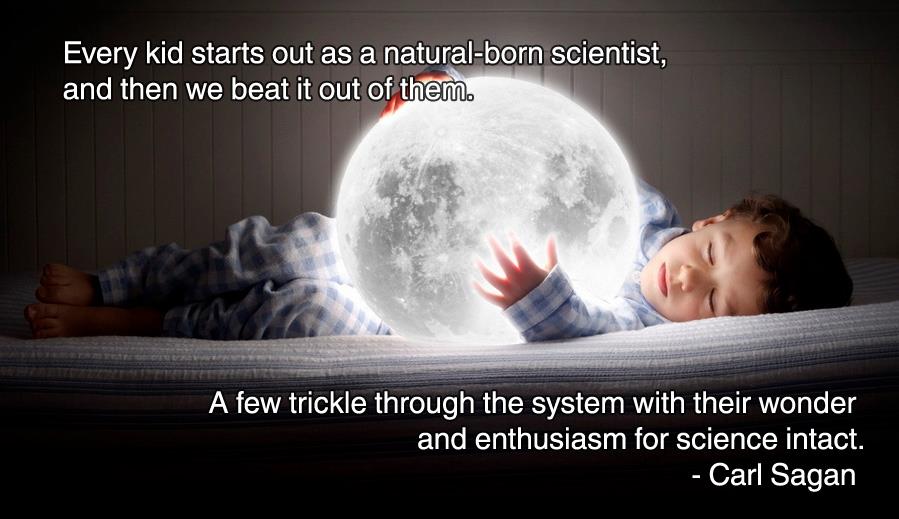Wonderful journal article on effectively using blogs in the classroom. The author lists five ways to use blogs, and each one has possibilities for every classroom.
projectwet.org/project-wet-news-events/water-education-blog/
View from my backyard
Wednesday, May 1, 2013
So much going on this week. The weather has finally warmed up, and my daffodils, which have been up for over a month, finally got the opportunity to bloom!
I received my student teaching assignment, and I will be teaching eight grade Earth Science right here in Oshkosh. I cannot believe my luck - my favorite age group of students, and my favorite subject! I am looking forward to working with these students in the fall and trying out some of the wonderful ideas I have learned this past semester. I hope to introduce them to a science blog, and help foster the idea that learning extends well beyond the classroom into their lives outside of school. My idea is to have them spend a little time each week observing the natural world around them, and then recording their observations. Hopefully, they will discover that writing can be something that helps them express themselves, and that taking the time to look more carefully around them will open new doors to the delights of nature.
That being said, I have not yet been in contact with the teacher that I will be working with, but her school website says that she is very traditional. It's my hope that she is not so traditional that she will object to trying new things in the classroom. I have so many ideas of ways to encourage reading, and exploring in the classroom, that I hope I don't have to wait until I actually have my very own classroom to try them out.
Off to appreciate another beautiful day!
Julie
Thursday, April 11, 2013
Revelations in the rain
I found this a few weeks ago, and thought it would make a nice poster for a classroom. I also got to thinking about it after our class discussion last night, when we were demonstrating new ways to help students approach a textbook.
I think all of us who have succeeded to the point where we are in college, or have obtained a degree, take it for granted that even if we struggle a bit with textbooks, we can overcome any problems with content fairy easily. We are familiar with the table of contents and index, as well as knowing when to pause and reflect on new content in order for it to make sense.
It never occurred to me before that there are students who can't do this and that struggle with even the most basic navigation of textbooks. The strategies that we covered last night make a lot of sense. I find that I use a version of SQ4R with my Chemistry class textbook, and I wasn't even aware that I was doing it until it was revealed to me in researching the topic.
If we truly take the time to model these textbook reading strategies for our students, we can indeed train their minds to be thoughtful about complicated texts. We can open the doors for them so that they can explore the ideas and concepts that are presented in these books in a way that actually is meaningful, and makes the content come alive for them. Oh the places they'll go!
Saturday, March 30, 2013
Great horned owls and useless textbooks
This is a photo of a great-horned owl that I happened to catch sitting on my neighbor's snowbank one morning recently. The the puppy woke me up for an unexpected trip outside, and I am glad I got the chance to see it sitting just outside of my living room window, even if it meant traipsing outside at 1:00 am in the bitter cold.
What does this have to do with this particular blog post? In truth, nothing, but I did first spot it from my backyard, and that is my title, and how often does one get to see an great-horned owl sitting in the snowbank, post rabbit (as evidenced by the entrails, and the hind feet left in that spot in the morning)? I find that there is a learning experience to be had in and around my house almost daily, if I just take the time to really look.
So, back to relevant, learning related content.I have been doing some clinical hours at Oshkosh North High School in three freshman Physical Science classrooms. This is not my particular area of science interest or expertise, but a great learning experience for me. The teacher I am with first hour is teaching this course for the first time in over ten years, and he models his instruction and his lessons after the second hour teacher that I am with. This second instructor co-teaches with another teacher, due to the large number of students having learning disabilities in their classroom. I spoke with him at some length after I realized that they didn't use a textbook in the class. He said that the textbook was not very useful to the content he needed to teach, and it didn't cover the standards that Oshkosh had established for Physical Science. He commented that the books were great for propping things up when needed. The textbooks didn't look to be very old, but perhaps they were just very gently used in general. He said he mostly relied on handouts that he had created himself to cover the material. I asked if he ever used additional reading materials to go along with his lessons, and he said that reading was not his strong suite, so he didn't have any extra materials, such as articles or books for his students. He did comment that for his Astronomy class that he teaches, that he often used magazine and newspaper articles to teach about new discoveries in astronomy. I found this hopeful.
The teacher that I am with for the third hour also relies on his own handouts to teach most of the material. He said that there are reading comprehension benchmarks that are required for the freshman, so he does have them read selected chapters or sections of the textbook. Again, the comment was made that the texts simply don't cover the material that needed to be covered. I asked if he used any additional or extra reading material for his students, and he said no. It just so happens that our book for Discussion, Rocket Boys, is about all of the science content that these teachers are currently discussing in class. I asked all three of them if they had ever thought about using it for their classes, and none of them had even heard of it. They did not seem to want to talk about it any further, either.
What I take away from this is that we may not have the textbooks that we would like to have to teach our classes.Textbooks are a very expensive purchase, and they are expected to last for many years of use. So if we don't like the way in which they present information, it would seem that having comprehensive text sets may be necessary for all units. Creating handouts is fine, but from what I saw of how they are used in these classes, it is no different from writing on the board while you lecture about the printed material. I wonder, is reading in the content area a new idea? These teachers were not overly removed from college, yet none of them really saw using additional reading material as something that would benefit their students. I can definitely see where text sets would benefit the students in these classes.
Friday, February 15, 2013
Birds, ankles, knees and snow and politics
This has been a very busy week indeed. Besides homework (hard to believe I have so much at my age; I wonder sometimes what I was thinking going back to school), my roommate injured his knee slipping on the snow last weekend, and has been unable to walk. His knee is slowly getting better, but it has meant more work for me playing nursemaid to him all week. I also found out on Tuesday that my daughter, who thought she had only sprained her ankle, actually broke it. She had surgery to insert a screw and some metal plates today, so I spent the better part of this afternoon worrying about her. And, it snowed again, which in my case means shoveling, since I do not own a snow blower.
These types of distractions are not helpful when I should be focusing on things like Chemistry, or Reading 440. I am also quite distracted by state and national political news this week - so much is going on, and I find that I simply cannot just ignore it, even when I know I should be studying. It is also the start of the Great Back Yard Bird Count, and as I pulled into the driveway this afternoon, I just had to stop and do my first count. I have 6 different feeders in the backyard, and there were 8 different kinds of birds about the feeders within a fifteen minute time frame.
A week like this reminds me that when I am teaching, I need to be cognizant of my students distractions as well. I can force myself to be focused for long periods of time, but that has taken years of practice to achieve. When you are`young, hormones are raging, peer pressure is unbelievably strong, and school might not always be at the top of your priorities. How do we go about focusing our students attention on what we need them to learn? Adding variety to our teaching methods is certainly one way, but addressing the individual needs of each student may be the greatest challenge that we face.
These types of distractions are not helpful when I should be focusing on things like Chemistry, or Reading 440. I am also quite distracted by state and national political news this week - so much is going on, and I find that I simply cannot just ignore it, even when I know I should be studying. It is also the start of the Great Back Yard Bird Count, and as I pulled into the driveway this afternoon, I just had to stop and do my first count. I have 6 different feeders in the backyard, and there were 8 different kinds of birds about the feeders within a fifteen minute time frame.
A week like this reminds me that when I am teaching, I need to be cognizant of my students distractions as well. I can force myself to be focused for long periods of time, but that has taken years of practice to achieve. When you are`young, hormones are raging, peer pressure is unbelievably strong, and school might not always be at the top of your priorities. How do we go about focusing our students attention on what we need them to learn? Adding variety to our teaching methods is certainly one way, but addressing the individual needs of each student may be the greatest challenge that we face.
Subscribe to:
Posts (Atom)



